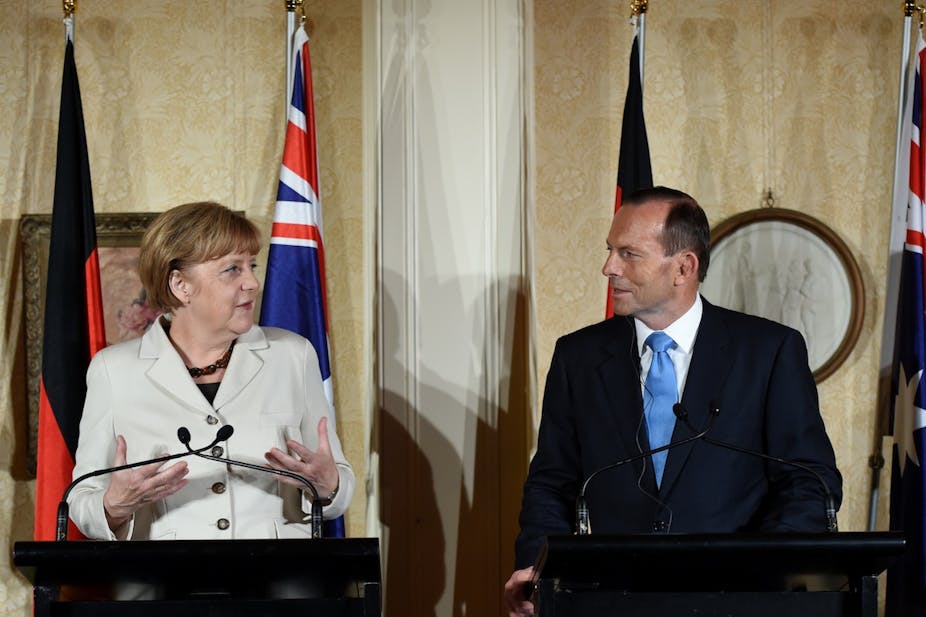G20 leaders have put growth and employment at the centre of the global agenda.
To spur collective growth by more than 2% over five years, member countries have agreed to implement a package of structural reforms (among others, increasing quality investment in infrastructure, reducing barriers to trade, creating more employment opportunities, and increasing market competition).
Such policies are proposed to overcome the allegedly limited effectiveness of standard monetary and fiscal policy tools. Given historic‐low interest rates in most G20 countries, conventional monetary policy is severely limited in its ability to stimulate growth and affect the business cycle.
The use of fiscal policy is even more controversial and has triggered heated debates in Europe: German chancellor Angela Merkel has steadily defended the virtues of fiscal austerity, while Italian prime minister Matteo Renzi has called for expansionary fiscal spending to boost growth.
But what do we know about the returns from fiscal spending, really?
Quantifying the effect of fiscal spending
Academic researchers have found it challenging to quantify the gains from fiscal policy. What is the return from spending one dollar of taxpayers’ money? “How much bang for a buck?” The answer depends on many factors.
Even the most stylised textbook macroeconomic models tell us that a country may reap different returns depending on elements such as its exchange rate regime, health of its financial system and where it find itself in a boom or a bust when implementing fiscal policy moves.
Consequently, the correct measurement of the impact of fiscal policy calls for carefully designed macroeconometric models that consider a myriad of interrelations. To add to the difficulty, fiscal policy decisions usually come after long (often heated) political discussions, typically implemented with some lags.
This means that there are potentially two powerful and very different fiscal policy channels to consider - firstly, the impact of actual changes in public spending; and secondly the impact of the announcements of future fiscal policies (because they can influence consumer and entrepreneurial decisions).
Higher returns during recession
Despite these qualifications, some consensus has emerged on when fiscal multipliers (that is, returns from fiscal spending) may be large: recessions. Research that I conducted at the Melbourne Institute with a pool of international co-authors (Giovanni Caggiano, Valentina Colombo and Gabriela Nodari) showed that one dollar of public money spent during the 2007-09 crisis could generate 2.5 dollars of output in five year’s time.
Similarly, UNSW Professor James Morley and coauthors found large and persistent government spending multipliers during periods of considerable economic slack, a finding consistent with the research mentioned above.
These empirical results ‐ higher returns from fiscal spending in recessions ‐ are consistent with theoretical predictions. This is because, during economic slack, a country’s central bank refrains from raising interest rates after a fiscal spending shock. Recent theoretical contributions based on modern macroeconomic frameworks tend support to this prediction.
This implies that the increase in aggregate output due to such a fiscal policy move is not “counterbalanced” by higher borrowing costs for consumers and firms, as interest rates remain low. And so consumers and firms do not reduce their spending. Technically, no “crowding out” of consumption and investment occurs. This implies that the output effect of a fiscal policy move can be eventually large.
A warning
So, should policymakers push hard on the fiscal policy pedal? A warning is in order here. High returns from fiscal spending are likely to occur only in countries whose public debt is judged by the markets to be sustainable. If not, fiscal multipliers can be negative, as shown by some recent research.
This is because countries with a too high debt‐to‐GDP ratio risk falling into a vicious spiral. The increase in public spending raises concerns in financial markets and this pushes up the risk‐premium on the public debt issued to finance the public spending.
The premium then translates into a higher debt service which increases future debt burden, thereby reducing the room of fiscally unsound countries to issue further government securities.
Fiscal policy is potentially a very powerful instrument to boost growth in countries that are in severe economic conditions. But policymakers should be careful. At times, a one‐size‐fits‐all approach makes a lot of sense. In case of fiscal policy, it simply does not.

